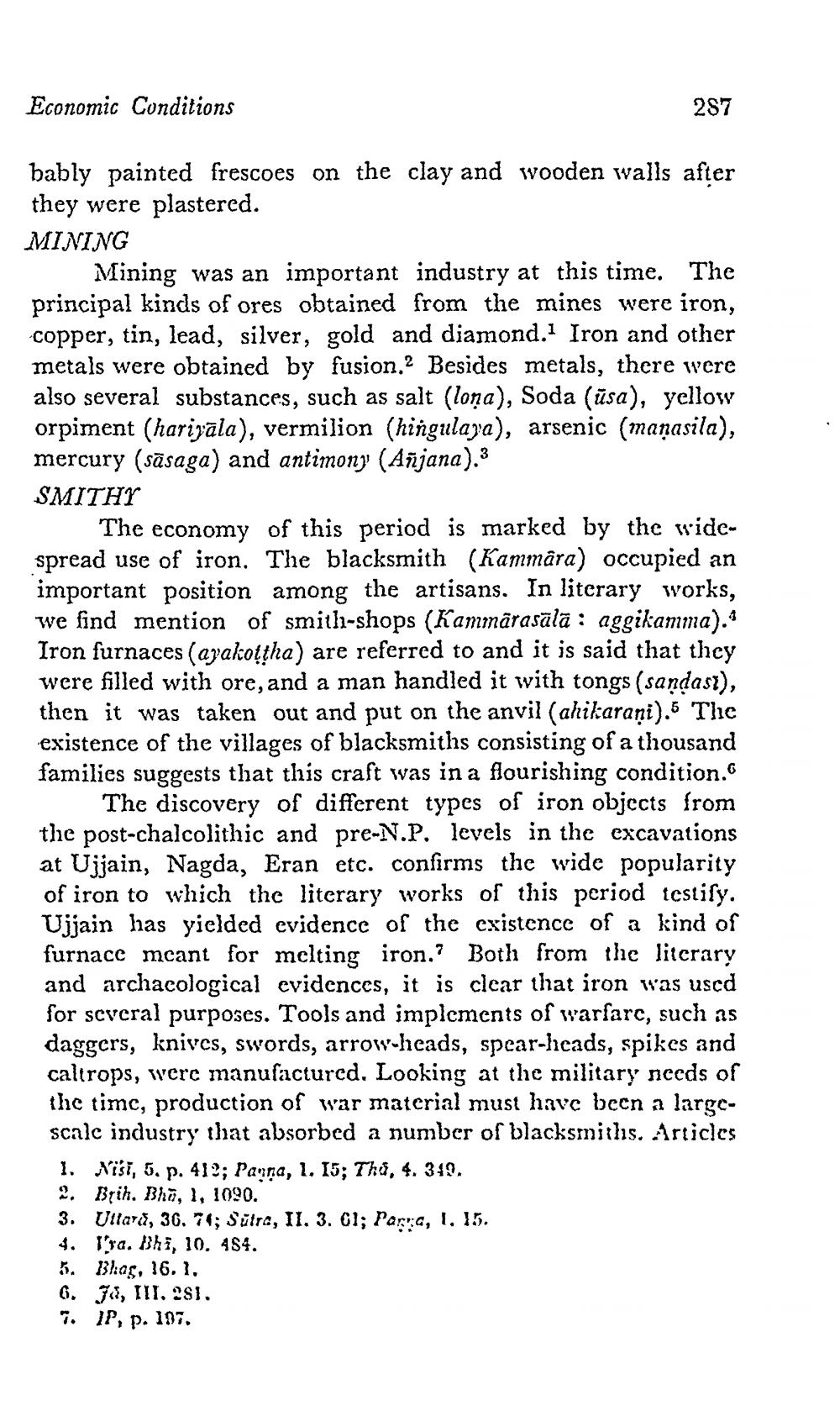________________
Economic Conditions
287
bably painted frescoes on the clay and wooden walls after they were plastered. MINING
Mining was an important industry at this time. The principal kinds of ores obtained from the mines were iron, copper, tin, lead, silver, gold and diamond.1 Iron and other metals were obtained by fusion.2 Besides metals, there were also several substances, such as salt (lona), Soda (ūsa), yellow orpiment (harijāla), vermilion (hingulaza), arsenic (maņasila), mercury (sāsaga) and antimony (Añjana).3 SMITHY
The economy of this period is marked by the widespread use of iron. The blacksmith (Kammara) occupied an important position among the artisans. In literary works, we find mention of smith-shops (Kammārasālā : aggikamma).' Iron furnaces (ayakottha) are referred to and it is said that they were filled with ore, and a man handled it with tongs (sandası), then it was taken out and put on the anvil (ahikarani). The existence of the villages of blacksmiths consisting of a thousand families suggests that this craft was in a flourishing condition.
The discovery of different types of iron objects from the post-chalcolithic and pre-N.P. levels in the excavations at Ujjain, Nagda, Eran etc. confirms the wide popularity of iron to which the literary works of this period iestisy. Ujjain has yielded evidence of the existence of a kind of furnace mcant for melting iron.? Both from the literary and archacological evidences, it is clear that iron was used for scveral purposes. Tools and implements of warfarc, such as daggers, knives, swords, arrow-heads, spear-heads, spikes and caltrops, were manufactured. Looking at the military needs of the time, production of war material must have been a largescalc industry that absorbed a number of blacksmiths. Articles 1. Nist, 5. p. 412; Panna, 1. 15; Thu, 4. 319. 2. Bțih. Bhū, 1, 1090. 3. Ullardi, 36. 74; Sülra, II. 3. C1; Parra, 1, 15. 4. l'ra. Bhi, 10. 484. 5. Bhag, 16.1. 6. Ja, III. 281. 7. IP, p. 197.




